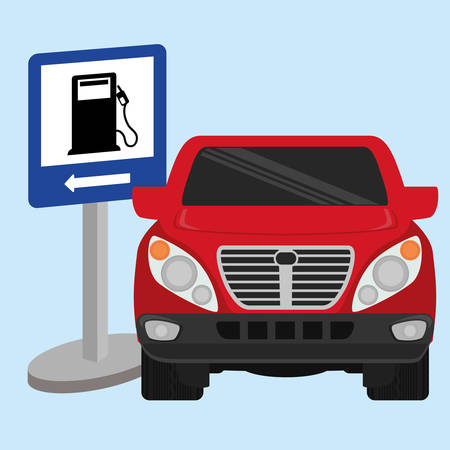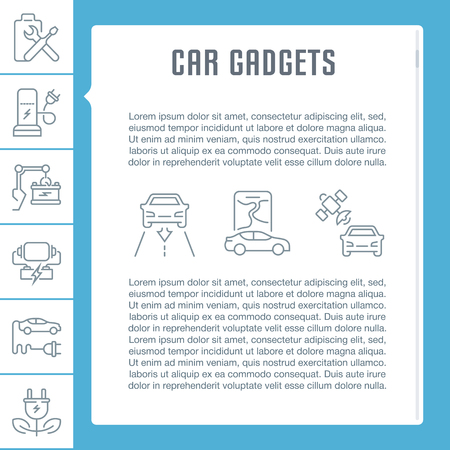Introduction to Telematics in Car Insurance
In the heart of America’s ever-evolving car culture, a new wave of innovation is quietly steering the direction of auto insurance: telematics technology. No longer just the stuff of sci-fi dreams or classic automotive fantasies, telematics is now a powerful tool that’s reshaping how insurers and drivers connect on the open road. At its core, telematics refers to the use of wireless devices to transmit driving data—think speed, braking habits, mileage, and even the time of day you hit the highway—directly from your vehicle to your insurance provider. As more Americans embrace this technology, it’s transforming not only how we drive but also how much we pay for coverage. This shift marks a return to classic values where individual responsibility and craftsmanship matter most; now, careful drivers can be rewarded like never before. Let’s take a look at how this cutting-edge technology is becoming a cornerstone of modern American car insurance and why it’s capturing the imagination (and attention) of both insurers and motorists across the country.
2. How Telematics Programs Work
Telematics programs are reshaping the classic car insurance landscape by harnessing cutting-edge technology to track and analyze driving behaviors in real time. These systems rely on a small device installed in your vehicle or an app on your smartphone, capturing a wealth of data that goes far beyond the basics. Let’s take a closer look at what information is gathered, how it’s interpreted, and the immediate influence it can have on your insurance discounts.
The Data Collected by Telematics
Telematics devices don’t just monitor how much you drive—they dig deeper, tracking detailed aspects of your driving habits. Here’s a breakdown:
| Data Type | Description |
|---|---|
| Mileage | Total distance driven during the policy period |
| Speed Patterns | How often and how significantly you exceed speed limits |
| Braking Habits | Frequency and intensity of sudden stops or hard braking |
| Acceleration | Instances of rapid acceleration or aggressive starts |
| Time of Day | When you drive—daytime versus nighttime hours |
| Cornering & Turning | Sharpness and speed of turns taken while driving |
| Phone Use (App-Based) | If you’re using your phone while driving, measured by some telematics apps |
How This Data Is Analyzed
The raw data collected from your everyday drives is sent securely to your insurer’s analysis platform. There, advanced algorithms review your unique driving patterns and assign you a risk profile. This process isn’t static—it updates in real time or periodically, depending on the program. The more safely and consistently you drive, the better your profile looks to insurers. What’s nostalgic yet strikingly modern here is the return to rewarding personal responsibility—something that resonates with American values of self-reliance and fairness.
Real-Time Impact on Policyholders
This isn’t just about gathering data; it’s about seeing results almost instantly. Some insurers allow policyholders to view their own telematics dashboards online or through an app, where they can track their scores and projected discounts as they go. If you’re driving safely, you could see your premium drop even before renewal time—a far cry from the old days when safe drivers had to wait years for a reward.

3. Telematics-Driven Discounts Explained
If you’ve ever wondered how your everyday driving can actually lower your insurance bill, telematics-driven discounts are the answer. These programs break from the old-school, one-size-fits-all approach by rewarding drivers for their real-world habits behind the wheel. Let’s take a closer look at how these discounts work and what kinds of savings are on the table for safe, responsible drivers.
Types of Telematics Discounts
Insurers across the U.S. offer a variety of discounts through telematics programs, each tailored to recognize different aspects of safe driving. The most common types include:
Safe Driving Discounts
This classic discount rewards drivers who consistently avoid hard braking, rapid acceleration, sharp turns, and speeding. By maintaining steady, cautious driving habits, you could see your premiums drop—sometimes by up to 30% with some providers.
Mileage-Based Savings
If you’re someone who drives fewer miles than average—maybe you work from home or carpool—telematics programs can recognize this low-risk behavior. Fewer miles on the road typically means less chance of an accident, so insurers pass those savings right back to you.
Pay-How-You-Drive Programs
These programs take things a step further by offering flexible pricing based directly on your driving score. The safer and more consistent your habits, the bigger your discount grows over time.
How Safe Driving Turns Into Savings
With telematics, every smooth stop and gentle turn tells your insurer that you’re a lower risk driver. Most programs collect data over a set period—usually three to six months—and then calculate your discount based on your overall safety profile. So if you make a habit of obeying speed limits, avoiding distractions, and taking it easy during tough weather conditions, you’re not just keeping yourself safe—you’re also setting yourself up for serious savings when renewal time rolls around.
The Bottom Line
In today’s insurance landscape, good driving is more than just its own reward. Thanks to telematics-driven discounts, American drivers have the power to turn smart, safe behavior into cold hard cash saved on their car insurance premiums.
4. Privacy Concerns and Consumer Considerations
In the land of wide-open highways and the enduring American love affair with the automobile, the conversation around telematics programs for car insurance finds itself squarely at the crossroads of innovation and privacy. As drivers weigh the lure of insurance discounts against the sharing of personal driving data, a uniquely American debate emerges—one that taps into our foundational values of freedom, autonomy, and skepticism toward surveillance.
The promise of telematics is enticing: safer driving habits can be rewarded with meaningful savings. Yet, many Americans express hesitation about handing over detailed trip-by-trip information to insurers. What data will be collected? How long will it be stored? And most importantly, who else might access it? These are questions that echo through kitchen table conversations from coast to coast.
Common Types of Data Collected in Telematics Programs
| Type of Data | Purpose | Consumer Concerns |
|---|---|---|
| Location (GPS) | Assess routes, mileage, risk zones | Tracking movements, potential misuse |
| Speed & Acceleration | Identify aggressive driving | Misinterpretation of context |
| Braking & Cornering | Evaluate safety habits | Lack of nuance in data analysis |
| Time of Day Driven | Measure risk based on timing | Sensitive to shift workers, night drivers |
The American Perspective: Striking a Balance
Americans have long cherished individual rights and self-determination. When telematics programs first hit the market, there was excitement about fairer pricing—but also fierce debate about privacy protection. State laws now vary widely in how they regulate telematics data usage and retention. Some states have enacted clear consumer protections; others leave more discretion to insurance companies, putting the onus on drivers to read the fine print.
Navigating Your Options as a Driver
If youre considering joining a telematics program for an auto insurance discount, its important to ask your insurer these key questions:
- What specific data will you collect and why?
- How long will you retain my data?
- Will my data ever be shared or sold?
- Can I opt out or delete my data later?
- How is my information protected from breaches?
The balance between saving money and safeguarding privacy remains central to this evolving American story—where technology meets tradition on every journey down Main Street or Route 66.
5. Adoption and Acceptance Across the U.S.
Telematics programs are weaving their way into the American fabric, but adoption varies greatly across regions, generations, and cultural mindsets. In urban centers like New York and Los Angeles, where traffic congestion and insurance rates run high, drivers are more inclined to embrace telematics for a chance at meaningful discounts. Meanwhile, in rural areas of the Midwest or Deep South—where long-standing traditions often shape behaviors—there’s a noticeable hesitation rooted in concerns over privacy and a preference for tried-and-true ways of life.
Regional Trends
The coasts tend to lead the charge with early adopters who are tech-savvy and open to change, motivated by the promise of lower premiums. Insurance companies often pilot telematics programs in these areas before expanding to other states. In contrast, adoption in heartland states has been slower, sometimes hindered by patchy mobile coverage or skepticism about data sharing.
Generational Gaps
Younger Americans—particularly Millennials and Gen Z—are generally more comfortable with digital monitoring and see telematics as an extension of the smart technology they already use daily. Older generations may be more cautious, recalling times when cars were pure mechanical machines rather than connected devices. This generational divide affects not only how quickly telematics spreads but also how insurance companies market these programs across age groups.
Cultural Attitudes
The classic American value of independence plays a double-edged role here. Some drivers appreciate the autonomy to control their insurance costs by proving their safe habits, while others worry about “Big Brother” watching over them. Trust in technology—and in insurance providers themselves—varies widely depending on personal experience and local community influence. Ultimately, as telematics becomes more familiar and success stories accumulate, acceptance is likely to grow, gradually bridging gaps between regions, ages, and attitudes.
6. The Future of Telematics and Insurance Savings
If you think the world of telematics-driven car insurance discounts is already impressive, just wait—there’s much more on the horizon. As technology evolves and American drivers grow increasingly comfortable with sharing their driving data, insurers are gearing up for a new wave of innovation. Let’s peer ahead at what’s next for telematics and how it may reshape the way we save on car insurance.
Emerging Technologies: Smarter, More Accurate Insights
We’re entering an age where telematics devices are not just plugged into your car—they’re becoming deeply integrated with vehicles’ native systems and even your smartphone. With advancements in artificial intelligence and machine learning, insurers will be able to analyze driving patterns with even greater accuracy. Imagine policies that adapt in real time as your habits change—rewarding those who consistently demonstrate safe driving behaviors or even offering immediate feedback to help improve safety on the road.
Personalized Premiums Take Center Stage
Forget the old one-size-fits-all approach. As telematics programs mature, premiums will become ever more tailored to individual drivers. Instead of relying solely on traditional factors like age or ZIP code, future discounts will reflect your unique driving story. For many Americans—especially those who drive infrequently or take extra care behind the wheel—this means bigger savings and a fairer shake.
The Regulatory Road Ahead
Of course, all this technological promise comes with important questions about privacy and data security. As federal and state regulators catch up with telematics innovations, expect new guidelines designed to protect consumers while encouraging competition among insurers. Transparent policies about how data is collected, stored, and used will become standard fare—and may even unlock further discount opportunities for those willing to participate.
A Community of Safer Drivers
The classic American spirit of looking out for one another could get a high-tech boost from telematics too. Picture local or national incentive programs where groups of safe drivers earn collective discounts or rewards. This sense of community—rooted in both nostalgia and innovation—could transform not only our wallets but also our roads.
As we look forward, one thing’s clear: Telematics isn’t just a passing trend. It’s set to become a cornerstone of how Americans save money on car insurance while embracing smarter, safer driving habits for generations to come.


